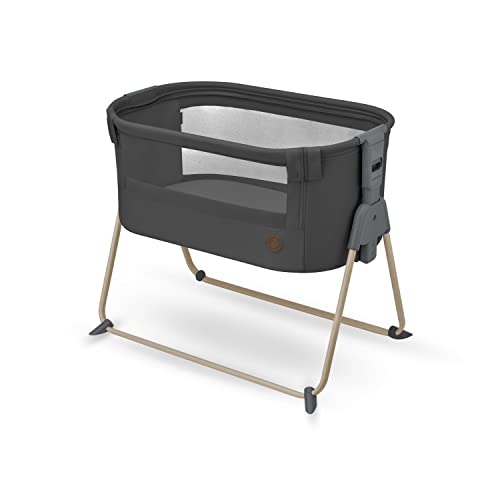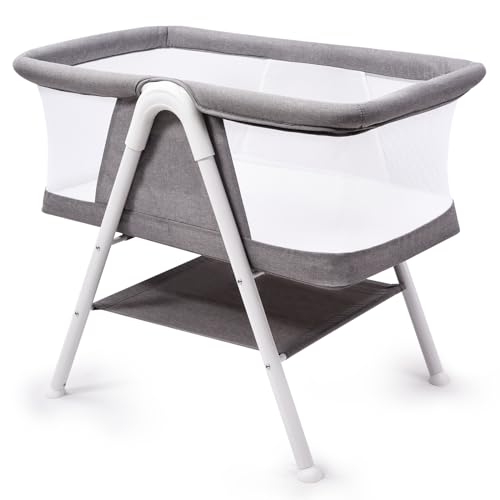
Nursery Cots
Overview
-
Founded Date October 7, 1928
-
Sectors Others
-
Posted Jobs 0
Company Description
Does Technology Make Tots And Cots Better Or Worse?
Tots and Cots: A Comprehensive Guide for Parents
When it comes to making sure a safe and comfy sleeping environment for infants and toddlers, the options parents make– ranging from cribs to cots– can considerably affect their wellness. Today’s short article dives deep into the complexities of picking the very best sleeping arrangements for tots, highlighting security, style, performance, and how these options progress as a kid grows.

Understanding Tots and Cots
Tots generally refer to children, especially young children aged in between 1 to 3 years, while cots are the sleeping arrangements specifically developed for infants and young children. The suitable sleeping equipment for this age consists of numerous types of cots, cribs, and young child beds.

Types of Cots
Numerous styles exist to fulfill the diverse needs of both moms and dads and kids. Below is a list laying out the most typical types of cots offered:
-
Standard Crib
- A traditional crib is developed for infants and typically includes sides that can be gotten used to various heights.
-
Convertible Crib
- This type of crib can convert into a young child bed, daybed, or cots4Tots.co.Uk full-sized bed as the kid grows, making it a long-term investment.
-
Portable Crib
- Likewise referred to as travel cots, these are light-weight and quickly foldable, perfect for taking a trip or smaller sized living areas.
-
Co-Sleeper
- A co-sleeper crib connects to the side of the parents’ bed, permitting for simple access while ensuring the baby has a different and safe sleeping space.
-
Young child Bed
- A toddler bed is a little bed that looks like a basic bed but is created particularly for young children, generally including security rails.
-
Mini Crib
- Mini cribs are smaller than basic cribs, making them an excellent choice for tight spaces, but they are appropriate for babies only.
Security Considerations
Making sure safety is vital when choosing a cot for a kid. Here are important security guidelines moms and dads need to consider:
- Check for CPSC Certification: Ensure that the cot complies with the Consumer Product Safety Commission (CPSC) requirements.
- Prevent Drop-Sides: Cots with drop-sides have been connected to security risks, and the current safety guidelines prohibit them.
- Use a Firm Mattress: A firm mattress decreases the threat of suffocation and must fit snugly within the cot.
- Keep Bedding Simple: Use a fitted sheet and avoid pillows, comforters, and stuffed animals that can position suffocation hazards.
- Follow Weight and Age Guidelines: Ensure the kid has not exceeded the cot’s weight limit and is still within the advised age.
Transitioning from a Cot to a Toddler Bed
The transition from a cot to a young child bed can be a psychological turning point for both parents and kids. Here are steps to relieve the shift:
Timing
Deciding when to transition can be subjective, however it’s generally recommended to make the switch in between 18 months and 3 years, based upon aspects like:
- Physical Ability: If the kid is climbing up out of the cot.
- Potty Training: Consider transitioning if the child is potty training and needs easier access.
- Habits: Exhibiting indications of maturity, such as following instructions or expressing a desire for self-reliance.
Tips for Making the Transition Smooth
-
Include Your Child: Let the child choose their brand-new bedding or bed decor to instill excitement about the change.
-
Keep Routine Consistent: Maintain the child’s bedtime regimen to supply comfort during this duration of change.
-
Explain the Change: Discuss the shift to a young child bed positively, making it seem like a terrific adventure.
-
Security Measures: Place the bed against the wall or use bed rails to avoid falling during sleep.
Choosing the Right Bed
When choosing a toddler bed, parents require to consider factors like:
- Height: Low-profile beds are ideal for young children who may fall out during sleep.
- Resilience: Ensure the bed can hold up against active play along with sleep.
- Design and style: Choose a style that complements the child’s room and is attracting the kid.
Picking the best cot for your child can be a daunting process, but comprehending the options available, key security factors to consider, and the ideal timing for transitioning to a young child bed can make this journey simpler for moms and dads. Investing time and effort into these decisions will make sure that your kid has a safe, comfy, and supporting sleep environment.
Frequently asked questions
1. What is the distinction in between a cot and a crib?
- A cot is generally a smaller sized bed developed for more youthful young children, while a crib is a larger bed that is typically appropriate for infants as much as 3 years of ages.
2. When should I move my child from a crib to a young child bed?
- The transition time is normally between 18 months and 3 years; this change is based upon the child’s physical abilities and behavioral signs.
3. How can I ensure my child is safe while sleeping?
- Constantly stick to safety standards, utilize a company mattress with a basic bedding plan, and keep track of the cot’s weight limit.
4. What should I do if my child tries to climb out of the cot?
- If your kid is climbing up out, it may be time to consider transitioning to a toddler bed to prevent falls.
5. Can I use the very same mattress when transitioning?
- Generally, it is best to change the crib mattress with one that is particular to the toddler bed. Guarantee it fits snugly and sticks to safety standards.
By considering these elements, parents can design healthy sleep habits and offer their children with a secure environment that promotes relaxing sleep. Investing in quality sleeping plans will add to the child’s overall advancement and happiness.
